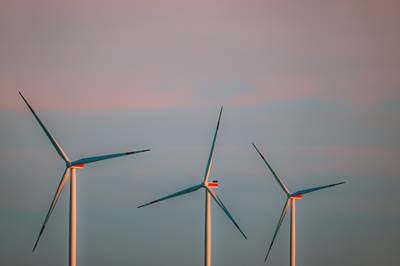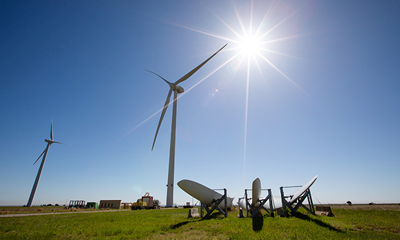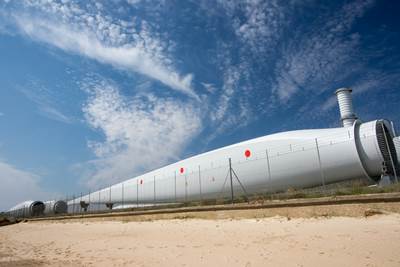NREL integrates robotics into wind turbine blade production
Research enables successful automation in post-molding manufacturing operations, which could lead to more competitive U.S.-based blade manufacturing.
NREL researcher Hunter Huth stands beneath a robotic arm designed to automate a portion of the blade manufacturing process. Source | Werner Slocum, NREL
Researchers at the U.S. Department of Energy’s (DOE’s) National Renewable Energy Laboratory (NREL, Golden, Colo., U.S.) have successfully leveraged robotic assistance in the manufacture of wind turbine blades, enabling the elimination of difficult working conditions for operators and the potential to improve the consistency of the product.
Although robots have been used by the wind energy industry to paint and polish blades, automation has not been widely adopted. Research at the laboratory demonstrates the ability of a robot to trim, grind and sand blades. Those necessary steps occur after the two sides of the blade are made using a mold and then bonded together.
“I would consider it a success,” says Hunter Huth, a robotics engineer at NREL and lead author of a newly published paper detailing the work. “Not everything operated as well as we wanted it to, but we learned all the lessons we think we need to make it meet or exceed our expectations.”
The paper, “Toolpath Generation for Automated Wind Turbine Blade Finishing Operations,” appears in the journal Wind Energy. The co-authors, all from NREL, are Casey Nichols, Scott Lambert, Petr Sindler, Derek Berry, David Barnes, Ryan Beach and David Snowberg.
The post-molding operations to manufacture wind turbine blades require workers to perch on scaffolding and wear protective suits including respiratory gear. Automation, the researchers note, will boost employee safety and well-being and help manufacturers retain skilled labor.
“This work is critical to enable significant U.S.-based blade manufacturing for the domestic wind turbine market,” says Daniel Laird, director of the National Wind Technology Center at NREL. “Though it may not be obvious, automating some of the labor in blade manufacture can lead to more U.S. jobs because it improves the economics of domestic blades versus imported blades.”
“The motive of this research was to develop automation methods that could be used to make domestically manufactured blades cost competitive globally,” Huth adds. “Currently, offshore blades are not produced in the U.S. due to high labor rates. The finishing process is very labor intensive and has a high job-turnover rate due to the harsh nature of the work. By automating the finishing process, domestic offshore blade manufacturing can become more economically viable.”
The research was conducted at the Composites Manufacturing Education and Technology (CoMET) facility at NREL’s Flatirons Campus. The robot worked on a 5-meter-long blade segment. Wind turbine blades are considerably longer, but because they bend and deflect under their own weight, a robot would have to be programmed to work on the bigger blades section by section.
The researchers used a series of scans to create a 3D representation of the position of the blade and to identify precisely the front and rear sections of the airfoil — a shape of the blade that helps the air flow smoothly over it. From there, the team programmed the robot to perform a series of tasks, after which it was judged on accuracy and speed. The researchers found areas for improvement, particularly when it came to grinding. The robot ground down too much in some parts of the blade and not enough in others.
“As we’ve gone through this research, we've been moving the goal posts for what this system needs to do to be effective,” Huth says. He adds that the automated system would provide consistency in blade manufacturing that is not possible when humans are doing all the work. He also says that a robot would be able to use “tougher, more aggressive abrasives” than a human could tolerate.
The U.S. DOE’s Advanced Materials and Manufacturing Technologies Office funded the research.
Related Content
Hexagon Purus opens new U.S. facility to manufacture composite hydrogen tanks
CW attends the opening of Westminster, Maryland, site and shares the company’s history, vision and leading role in H2 storage systems.
Read MoreMingYang reveals 18-MW offshore wind turbine model with 140-meter-long blades
The Chinese wind turbine manufacturer surpasses its 16-MW platform, optimizes wind farm construction costs for 1-GW wind farms.
Read MoreUpdate: THOR project for industrialized, recyclable thermoplastic composite tanks for hydrogen storage
A look into the tape/liner materials, LATW/recycling processes, design software and new equipment toward commercialization of Type 4.5 tanks.
Read MoreHonda begins production of 2025 CR-V e:FCEV with Type 4 hydrogen tanks in U.S.
Model includes new technologies produced at Performance Manufacturing Center (PMC) in Marysville, Ohio, which is part of Honda hydrogen business strategy that includes Class 8 trucks.
Read MoreRead Next
DOE funds project for 3D-printed wind blade tooling
Targeting U.S. wind energy, the program backs Purdue’s CMSC center and industry partners to develop the foundation for automated tooling manufacture, supporting new innovations in composite materials, other technology elements.
Read MoreNREL researchers point to path for improved wind blade recycling rates
Researcher consider strategies like policy regulation and recycling technology development to mitigate the impact of end-of-life wind blades.
Read MoreUMaine researchers aim to recycle wind turbine blades as 3D printing material
With a DOE grant in hand, UMaine’s ASCC seeks to develop an approach to recycle shredded wind turbine blade material as a cost-effective reinforcement and filler for large-scale 3D printing.
Read More

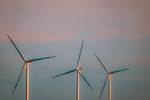

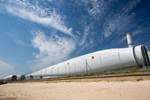









.jpg;maxWidth=300;quality=90)







